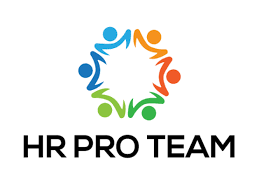Focused Training Course Material To Help You Teach A One-Day Course On Performance Benchmarking.
Download editable training course material to reach new learners with an easy-t-deliver experience and one-click content download.
This Performance Benchmarking Training Course Material puts you in complete control of your training courses. With a built-in PowerPoint slide deck in the instant download, you can effortlessly present this course as your own.
The comprehensive training manual lets you fine-tune your courses with custom content and practical examples to match your training environment. Developed for highly-practical settings, these training course materials offer the perfect balance of quality and personalisation — so you can deliver your courses exactly the way you want.
Whether you’re just starting out or you’ve been in business for years, this training course material will give you more freedom by saving you time.
Order Now
Trusted By Leading Brands.
Topics Covered.
1. Key benchmarking topics
- How companies achieve improvements.
- How performance benchmarking is an in-depth critical examination within a company.
- A performance benchmarking process.
- How successful performance benchmarking is dependent on exploring products or processes.
- Techniques can be used to compare products or processes with those of another company or across sections of a single company.
2. Benchmarking and product benchmarking
- How to collect and compare data to identify performance gaps.
- Product performance benchmarks.
- Best practices, standards, and outcomes.
- How to introduce a successful performance benchmarking project.
3. How to improve engagement within performance benchmarking projects
- Why benchmark projects are needed.
- Why performance skills are needed.
- How to scope a project.
- The source of a project statement.
- An actual plan.
- Processes and measures within benchmarking projects.
4. The project team
- How do I build the project team, and what roles are required?
- The role of resources and other vital factors.
5. The six key stages of a performance benchmarking process
- How to select the approach to use.
- How to set the objectives of a project.
- Preparing and planning activities.
- How to review project findings.
- Implementing improvements.
- How to evaluate the project.
6. Six reasons why performance benchmarking projects fail
- How a lack of clarity of purpose or focus can impact projects.
- How can a poor level of involvement cause difficulties?
- The impact of communication issues.
- What happens when there is no follow-through on implementation?
- The impact of a lack of resources.
- The impact of a poor awareness of the benefits.
What You Get:
- Comprehensive Course Workbook (54 pages)
- Detailed Instructor Manual
- Slide Deck (82 slides)
- Training Games
- Icebreakers
- Training Guides
- Customizable Course Tests
- Hands-On Activities and Exercises
- Reading Lists
- Marketing Materials
- Action Plans




































































